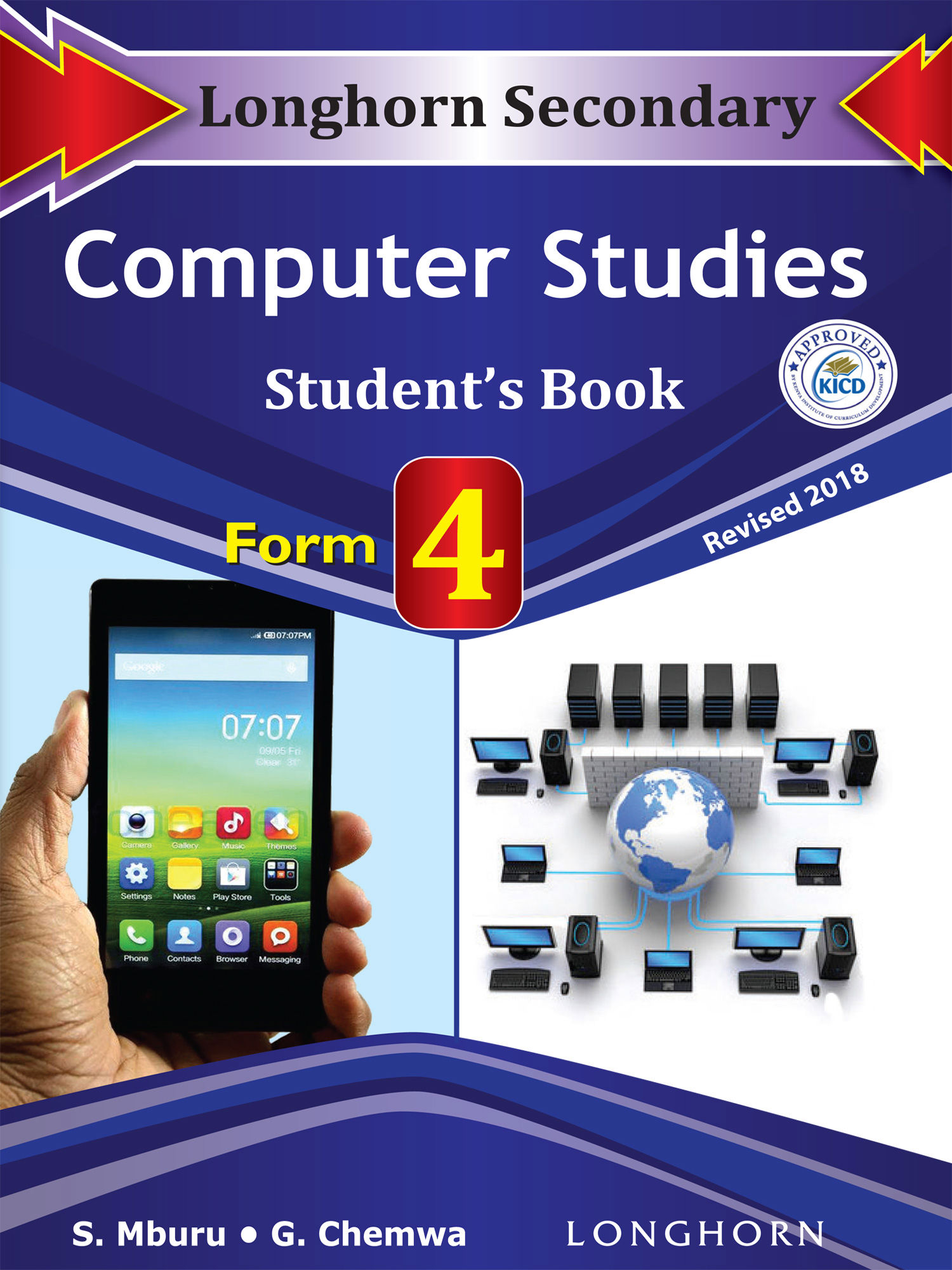
Authors
Stephen Mburu, Geoffrey ChemwaExercises kit’s authors
Stephen Mburu, Geoffrey ChemwaPublisher
Included in packages

-
The study kit contains 47 chapters and 21 exercises of which 11 are in the chapters and 10 in the task exercises.
-
Authors
Stephen Mburu, Geoffrey Chemwa -
Exercises kit’s authors
Stephen Mburu, Geoffrey Chemwa -
Subject
Technology -
Grade
Form 4 -
Kit's language
English -
Publisher
Longhorn Publishers -
Included in packages
Longhorn Secondary Computer Studies Series is a course developed in line with the Kenya Secondary School curriculum. It fully covers and fulfils all the goals and targets of the Computer Studies Syllabus.
Longhorn Secondary Computer Studies Series is unique in that it:
• Presents the content in well and logically organised topics which facilitate sequential transition from one concept to the next.
• Has a user-friendly approach which is well-centered on the learner's own environment for easier understanding.
• Uses simple language that is easy to understand and follow. • Provides exercises that enable the learner not only to recall, but also to understand and apply the skills acquired.
• Provides coloured pictures, drawings and screen shots that are well labelled that relate theory to real world practice.
• Provides short historical background to concepts hence making reading of the book interesting to the learner.
• Has comprehensive Teacher's Guides, that provide guidelines on how to teach the various concepts and answers to all exercises.
Longhorn Secondary Computer Studies Form 4 adequately and appropriately covers the topics outlined in the Computer Studies Syllabus for Form 4
Longhorn Secondary Computer Studies Series is written by highly experienced authors, with many years of classroom teaching and teacher training.
1. Introduction to networking and data communication
Lead |
Chapter |
|---|---|
| 1.1. |
Networking and data communication terms
Free chapter! |
| 1.2. | Types of computer networks |
| 1.3. | Purpose and limitations of networking |
| 1.4. | Assessment Exercise 1.1 |
| 1.5. | Elements of networking |
| 1.6. | Wireless communication |
| 1.7. | Data communication devices |
| 1.8. | Assessment Exercise 1.2 |
| 1.9. | Networking software |
| 1.10. | Network topologies |
| 1.11. | Assessment Exercise 1.3 |
| 1.12. | Setting up and configuring networks |
| 1.13. | Configuring IP Protocol |
| 1.14. | Revision Exercise 1 |
2. Application areas of information and communication technology (ICT)
Lead |
Chapter |
|---|---|
| 2.1. | Application areas of information and communication technology |
| 2.2. | Retail, reservation and educational systems |
| 2.3. | Communication systems |
| 2.4. | Industrial automation |
| 2.5. | Systems |
| 2.6. | Sales and marketing |
| 2.7. | Law enforcement |
| 2.8. | Revision exercise 2 |
3. Impact of information and communication technology on society
Lead |
Chapter |
|---|---|
| 3.1. | Impact of information and communication technology on society |
| 3.2. | Effects of ICT |
| 3.3. | Evolution and future trends of computing |
| 3.4. | Revision exercise 3 |
4. Career opportunities in information and communication technology
5. Computer studies project
Lead |
Chapter |
|---|---|
| 5.1. | Computer studies project |
| 5.2. | Proposed system |
| 5.3. | System analysis (Data gathering) |
| 5.4. | System design |
| 5.5. | Input design |
| 5.6. | Database and table design |
| 5.7. | System construction |
| 5.8. | HorizonMiS database tables |
| 5.9. | Database queries |
| 5.10. | Input forms |
| 5.11. | Generating reports and enforcing HorizonMiS security |
| 5.12. | HorizonMiS User Manual |
| 5.13. | Generating reports |
| 5.14. | Closing HorizonMiS system |
| 5.15. | Conclusion |
| 5.16. | Appendix |
6. Extras
Lead |
Chapter |
|---|---|
| 6.1. | Definitions |
